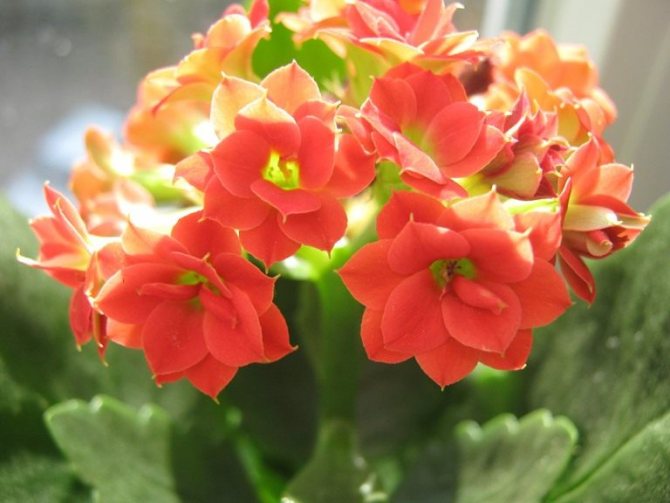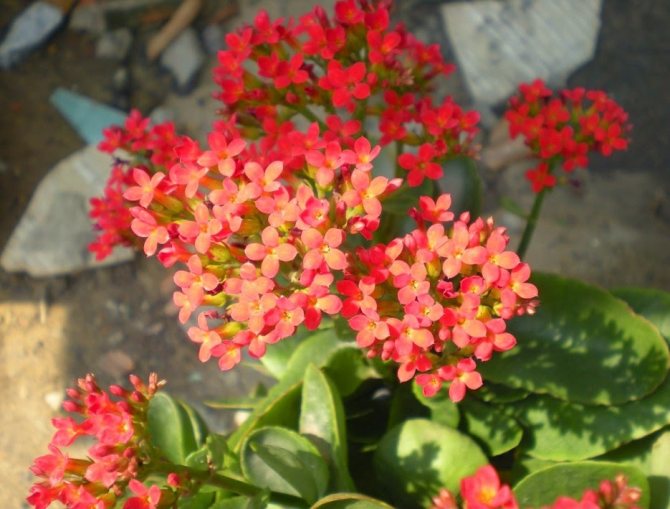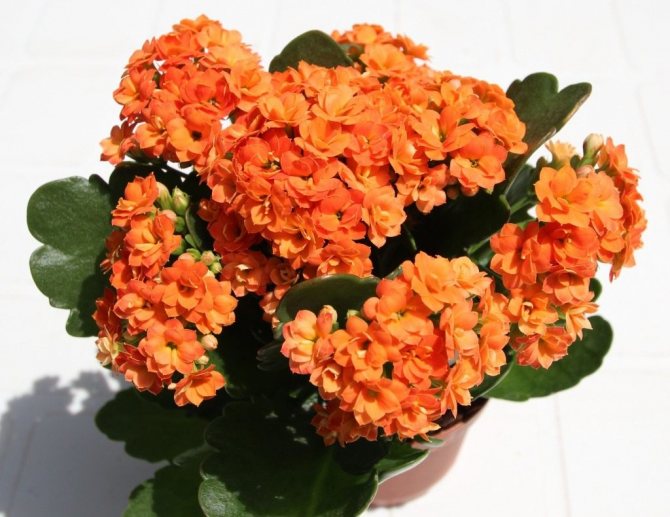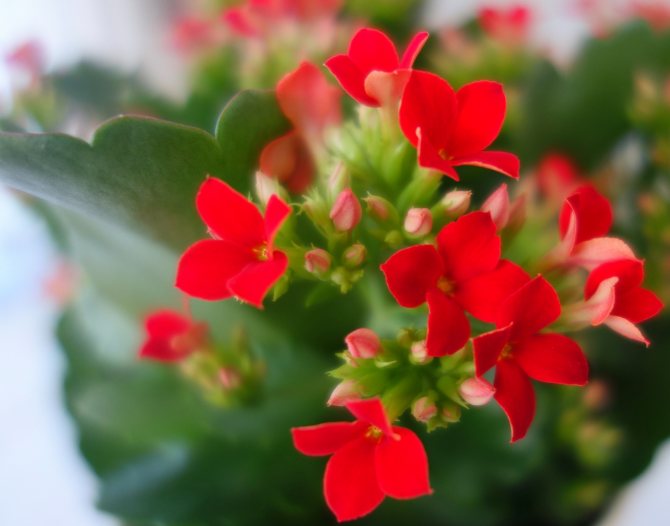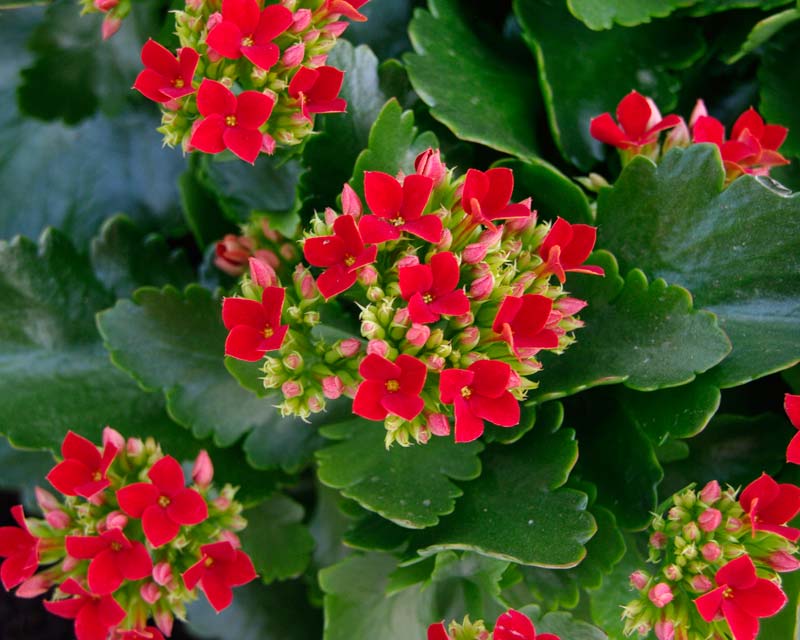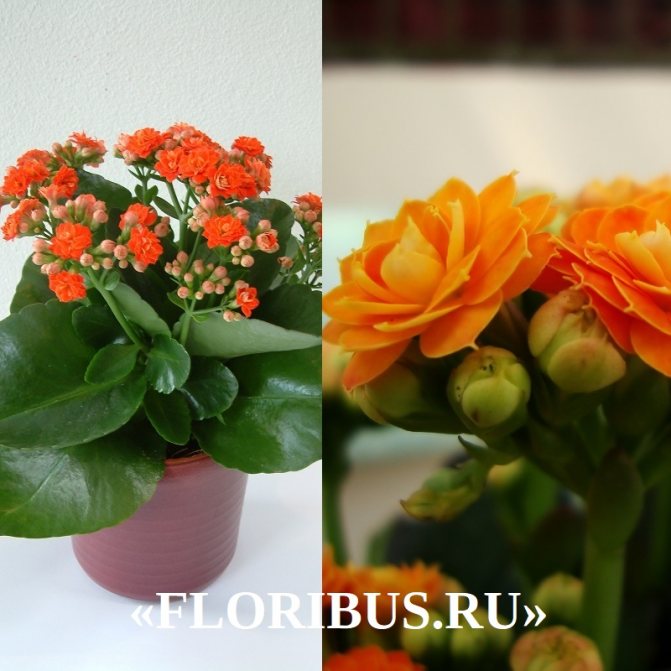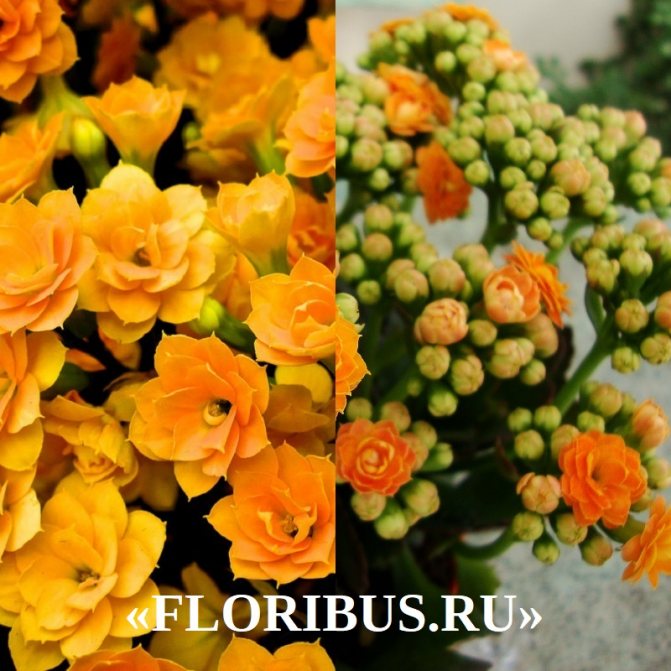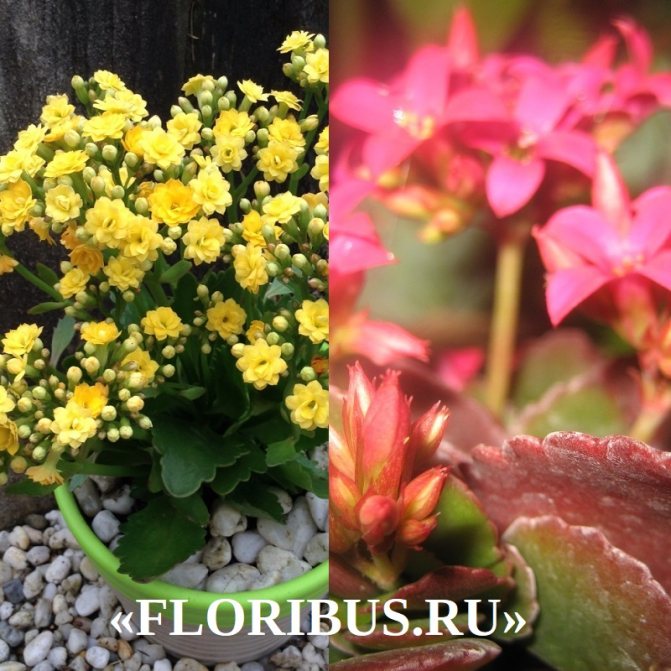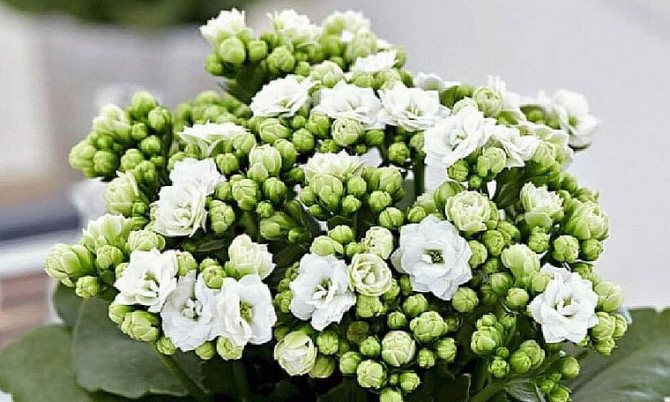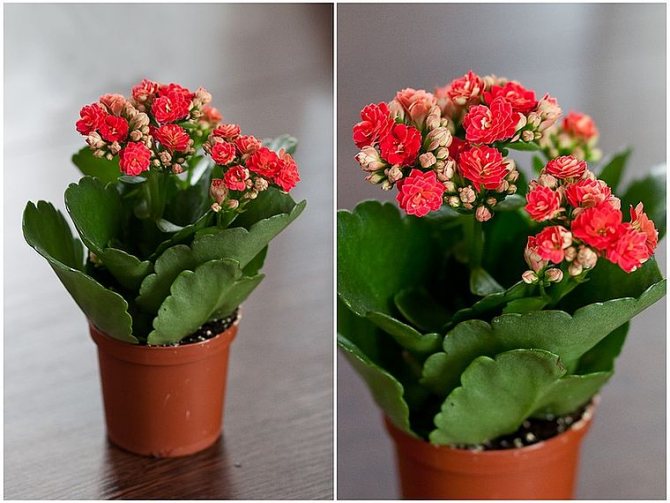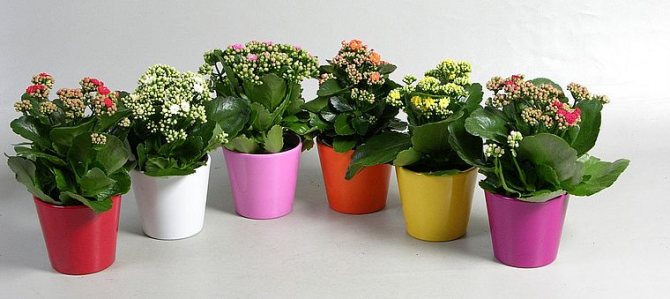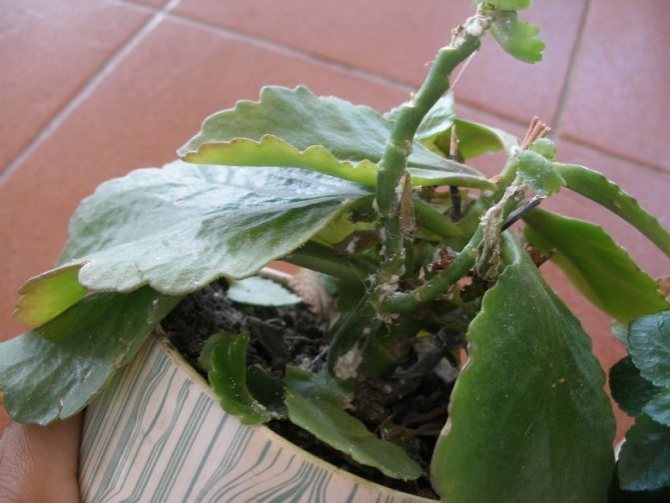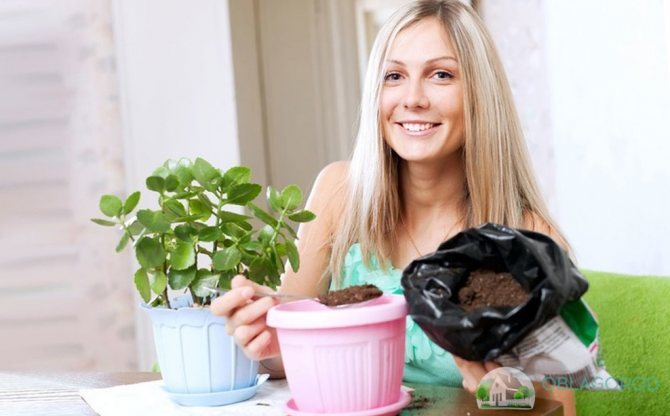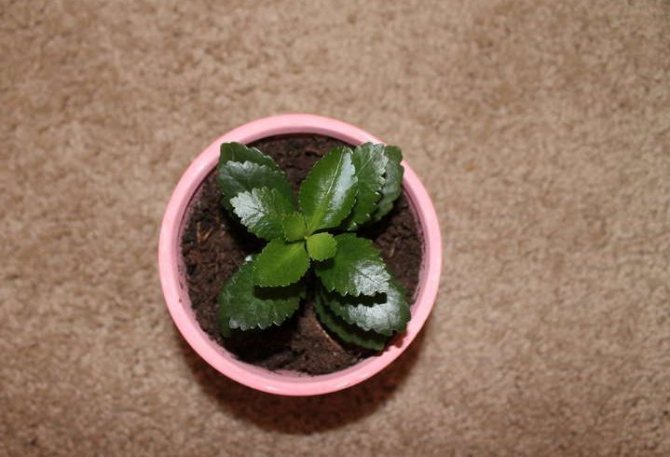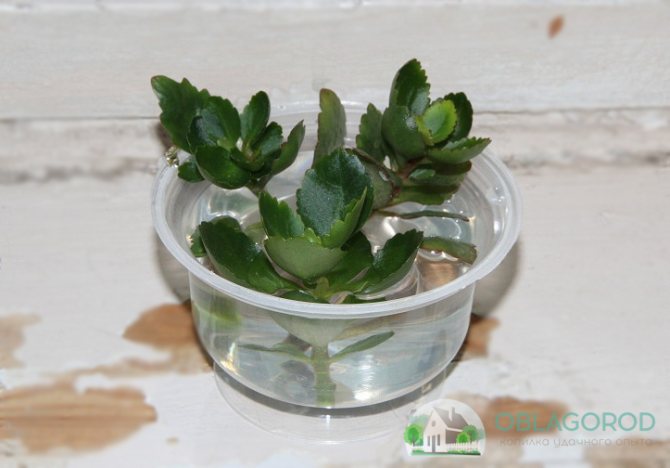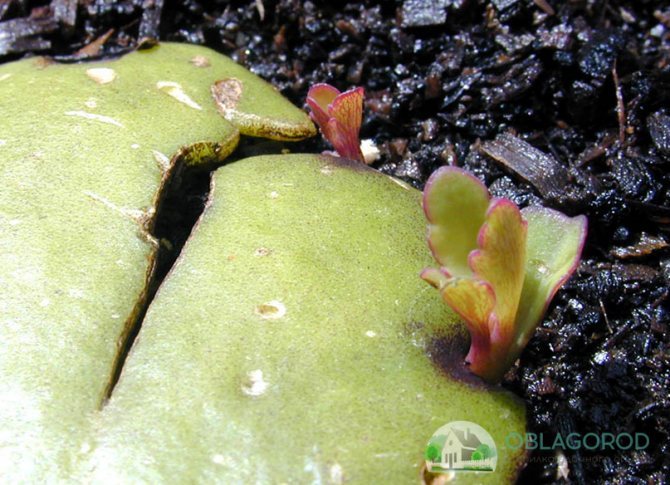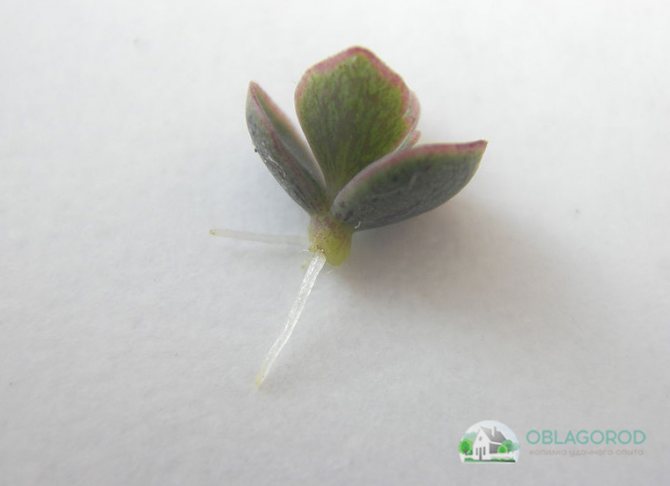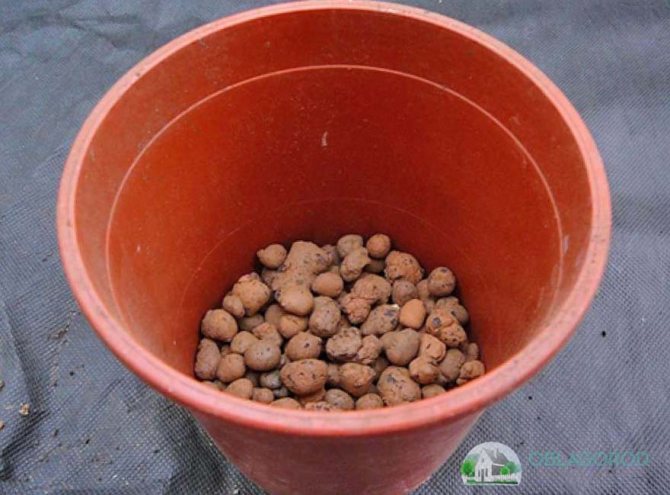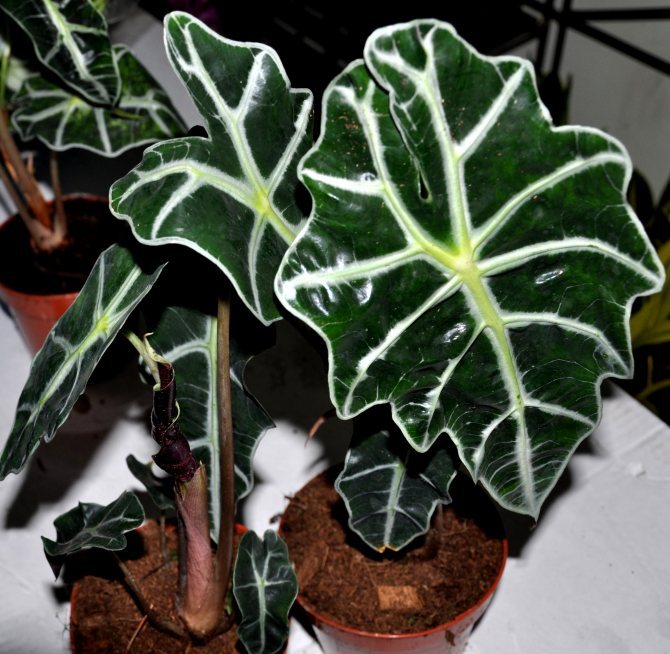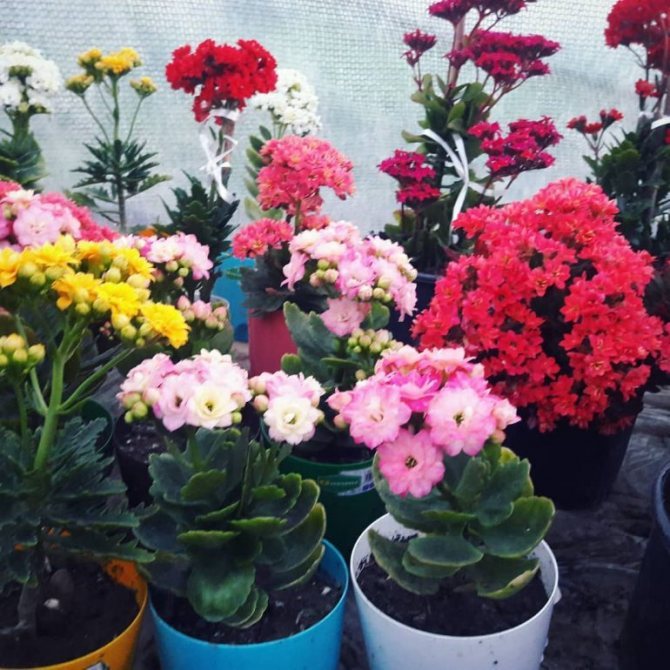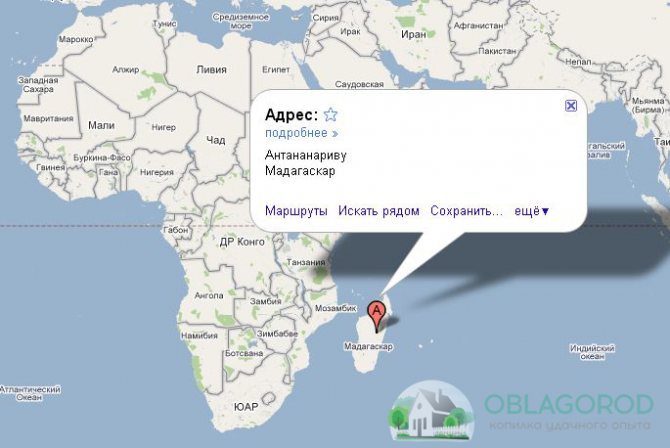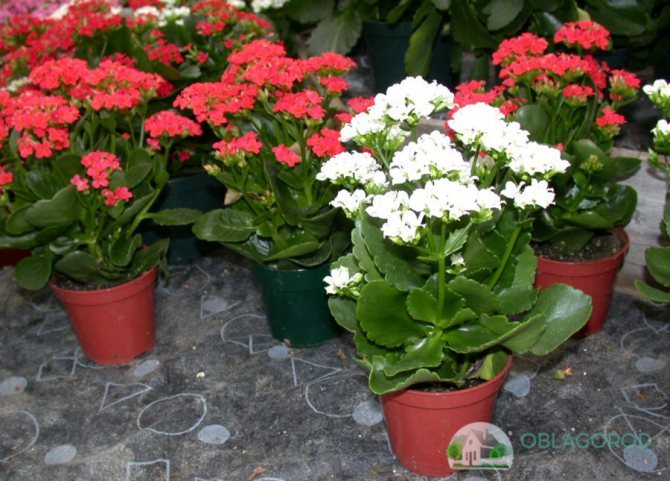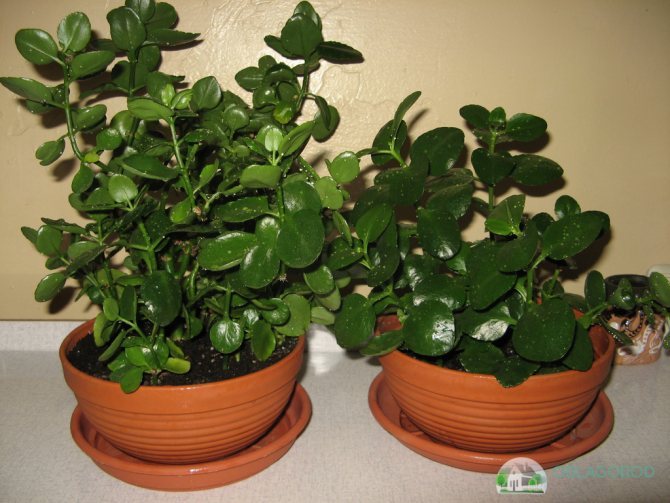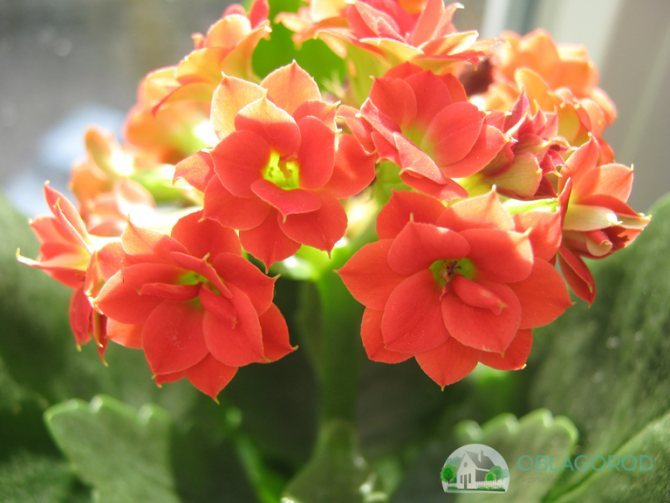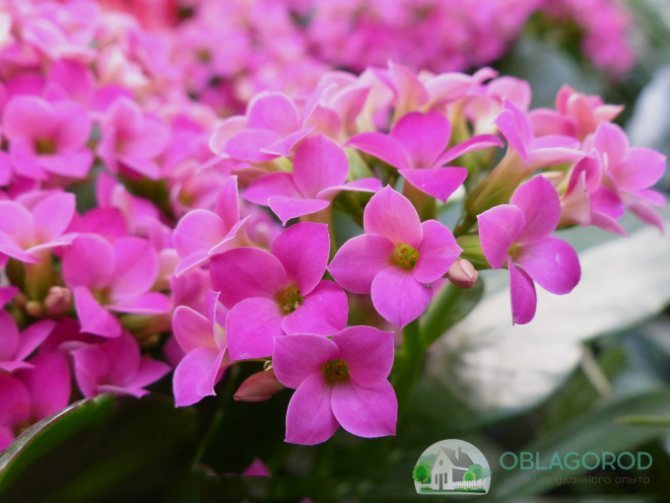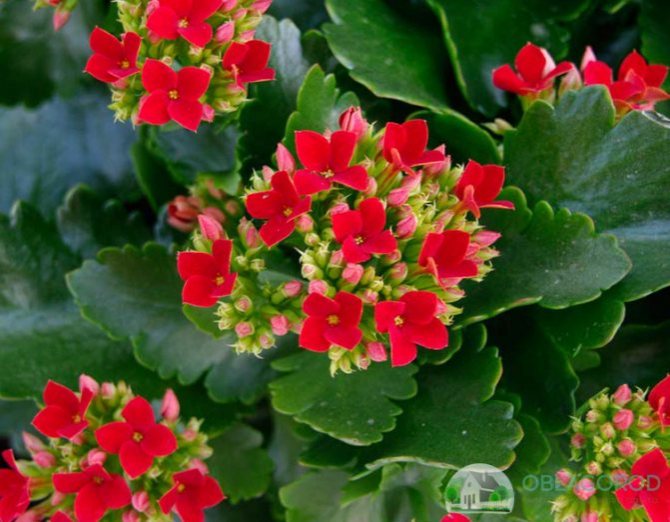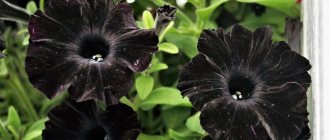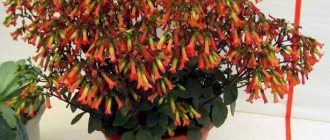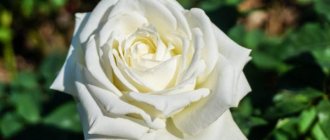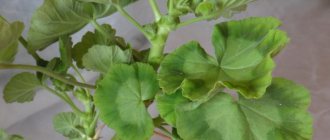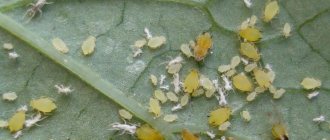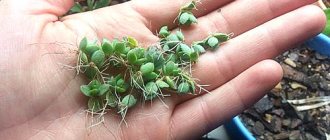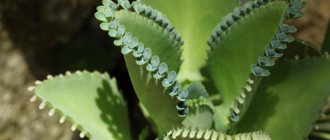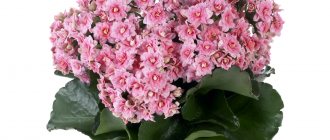Kalanchoe Blossfeld, what it looks like, what family it belongs to
The flowering perennial herb Kalanchoe Blossfeld (lat.Kalanchoe blossfeldiana) is a succulent member of the Fat family (lat.Crassulaceae). In the wild, it is found only in Madagascar. Sometimes on sale you can see plants under the most intricate names, for example, "Kalanchoe Brosselfeld", but this is a wrong name.
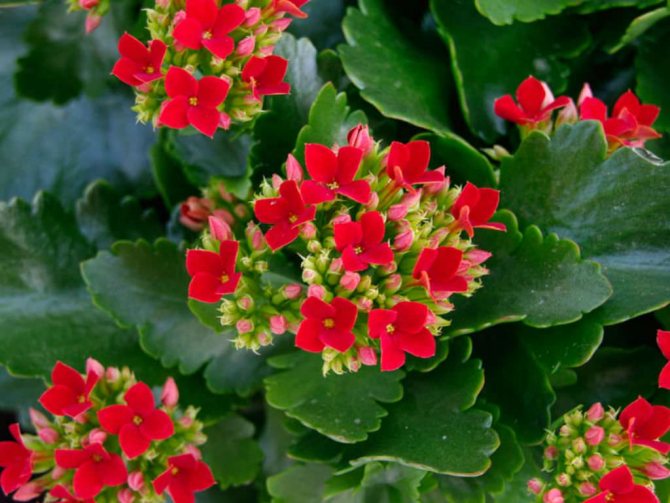
Simple Kalanchoe Blossfeld flowers
Bare branching succulent shoots form the crown of a plant up to 30 cm high. Large ovoid leaves with crenate edges are colored green or dark green, sometimes with a reddish border. The plant blooms in clusters, in which numerous buds bloom with simple, odorless, 4-petal corollas, predominantly dark red in color.
Note! All varieties of Blossfeld's Kalanchoe bloom from December to May.
Briefly about the history of appearance, the use of leaves
The succulent was first described by the German botanist Karl von Pellnitz in 1934. He published an article in a periodical journal, where he gave a detailed description of the characteristics of the plant. The name is given in honor of Robert Blossfeld, a famous German breeder.
Unlike other Kalanchoe species, Blossfeld is grown for its attractive appearance. For medicinal purposes, foliage juice is used, using it as an anti-burn agent, as well as to restore damaged skin (from scratches, abrasions, cuts).
Post-flowering care
All wilted peduncles are cut off, shortened by one third, and the pagons on which inflorescences have formed in the current season. When new branches grow, they pinch the tops after the formation of at least 4-5 leaves. The next pinching of the tops is necessary after the formation of several leaves in the new branches, and so several times per season, until a compact decorative crown is formed in the perennial. Watering and feeding after flowering Kalanchoe Blossfeld is carried out according to a rational regime of moisturizing and providing the plant with nutrients.
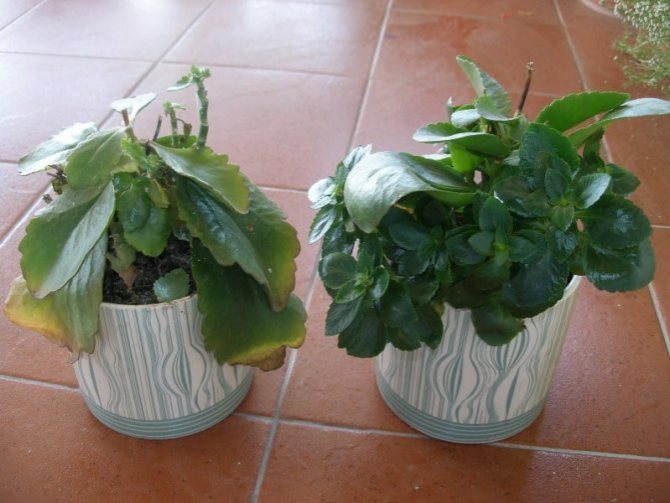

Popular varieties
How to prune a Kalanchoe: examples of bush formation and further flower care
At the end of the last century, breeders in Denmark and Holland bred numerous varieties of Blossfeld's Kalanchoe, which differ from natural forms by the splendor of flowering and more compact crown sizes. Now you can buy a plant with flowers of white, orange, pink, yellow shades, moreover, not only with simple corollas (4-8 petals), but also with double (up to 30 petals). A group of hybrids based on Blossfeld's Kalanchoe was given the general name Kalandiva and is distinguished by a long flowering period (up to 6 months).
Variegata
The variety is distinguished by a special color of the leaves. They are lighter than usual, while covered with chaotic spots and stripes of white, cream and pinkish shades. There may be a reddish border around the edge. Variegata blooms mainly with red and coral flowers.


Kalanchoe blossfeldiana Variegata
Rosalind (Pink Flaming Katy)
Rosebud variety with a compact bush no more than 25 cm high and very large, wide leaves. Corollas of flowers are double, double. The petals from the face are brighter than from the inside, painted in a delicate pink shade, which darkens as they are completely dissolved.The usual flowering time is spring, but under optimal conditions it can re-flower several times a year.
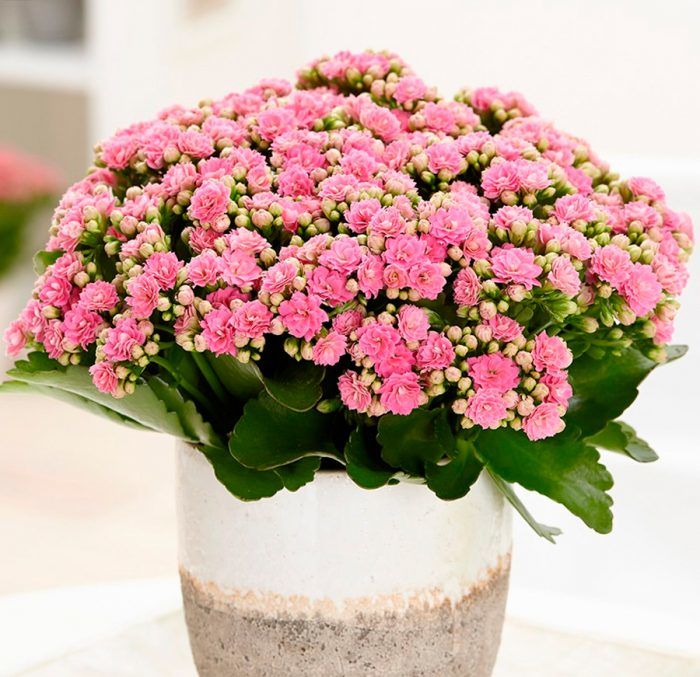

Kalanchoe blossfeldiana Pink Flaming Katy
Kalandiva mini (Lilliputian)
Variety series obtained on the basis of the Kalandiva line. Numerous double flowers, painted in pink, white, yellow, red shades. A distinctive feature is the maximum compactness of the bush. The height of the plant does not exceed 10-15 cm together with the peduncles.


Kalanchoe blossfeldiana Calandiva mini
Shell pink
The plant is very popular. Its peduncles are large corymbose caps of numerous buds (up to 60 each). At first, the petals are painted in a simple white-green hue, but as they dissolve, they become pale pink with barely noticeable veins. Although there are only 4 petals in each corolla, the variety is not inferior to the rosebud varieties in terms of showiness.


Kalanchoe blossfeldiana Shell Pink
Grandiva
Variety series with large flowers up to 2 cm in diameter. The shades of the petals are very different: pink, purple, violet, orange, lilac. The leaves are large and form a bowl, from which short, thick peduncles, crowned with unusually large double buds, tend upward.
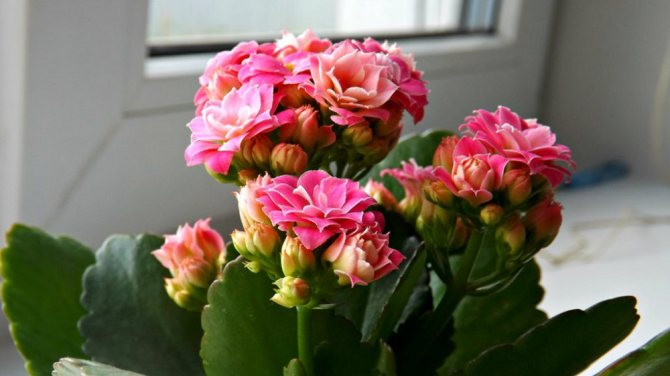

Kalanchoe blossfeldiana Grandiva
Kalanchoe Blosfeldiana mix
Under this name, terry varieties belonging to the Kalandiva group are most often sold in retail chains. They come in a wide variety of shades: white, red, purple, orange, yellow, violet, etc. Each year, new shades appear as a result of the hard work of breeders of large European nurseries.
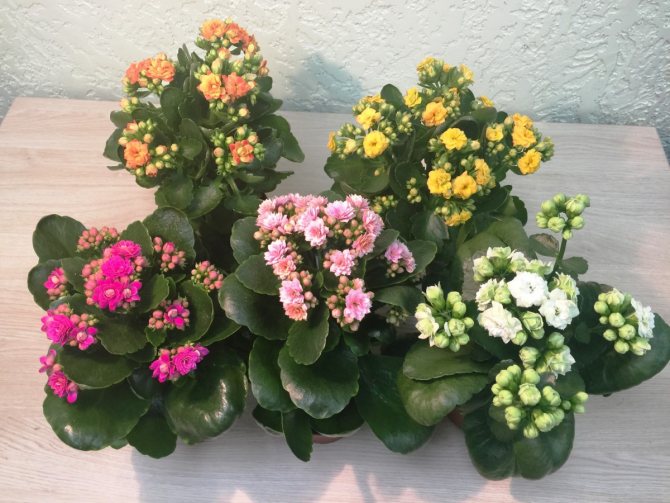

Blossfeld's multicolored Kalanchoe
Tom Tumb Tetra and Orange Triumph
A variety that can be easily identified by its large crown (up to 30 cm in height) with large wide leaves, as well as by its 4-petaled flowers, which look like small stars. It included specimens with red and orange flowers that form on short juicy peduncles in the form of loose brushes or corymbose inflorescences. For indoor maintenance, this variety is 100% suitable, it is distinguished by its unpretentiousness and increased immunity.


Kalanchoe Tom Tumb
Where did this flower come from on our windowsills
At the beginning of the 20th century, this flower was not even heard of - it was discovered only in 1932, less than a hundred years ago. As you might have guessed, the discoverer's surname was Blossfeld. He saw this shrub while traveling in Madagascar and could not resist - he immediately brought a sweet stranger to Europe.
The plant turned out to be harmful and did not take root well in our conditions. But Danish and Dutch breeders got involved. Their brainchild was able to boast of more noticeable leaves - large and bright, and the shades of flowers were added.
In addition to reds, European florists have at their disposal yellow, orange, pink and white flowers. But they all had only 4 petals.
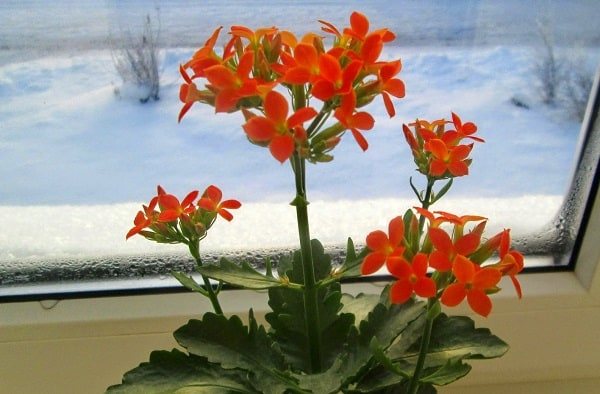

And just yesterday, at the beginning of the 21st century, the Swedes bred a new variety of this plant. Its flowers are decorated with many petals and look like miniature roses. The variety was named Kalanchoe Kalandiva. Most modern stores under the Blossfelda name sell this particular variety.
By the way, do not be surprised if you see "roses" not only of the above-mentioned shades, but also green, or even several shades at once.
This beauty blooms for about one and a half months (while four-petal varieties - only 1.5 months). The pot is really unpretentious. Just a dream, not a flower!


Kalanchoe Blossfeld - home care
Growing a succulent plant at home is easy. It dies very rarely, but often loses its decorative effect with a lack of light. Re-flowering can be achieved when certain conditions are created.
Illumination and temperature conditions
Rheo flower: examples of flower care at home
Kalanchoe needs a lot of sun, so it is better to put the pot on the south, southeast or southwest window. In partial shade, the plant will not die, but it will stretch out strongly, its leaves will become smaller, decorativeness will suffer significantly.
The optimum temperature in the warm season is + 18 ... +25 ° С. From the end of autumn, the pot is rearranged in a cool, bright place, since a reduction in daylight hours in warmth leads to a strong elongation of the stems.
Note! Lowering the temperature up to +10 ° С is allowed.
Watering rules and humidity
Watering the Kalanchoe is performed during the warm season after the soil in the pot has dried by a third. If watered more abundantly, the root system can rot. In winter, watered no more than 1 time per month. Spraying the plant is not required even in the heat, but periodically it should be gently bathed under a warm shower to wash off the dust from the leaves.
Top dressing and soil quality
The optimum reaction of the soil pH should be 6.0-6.5. The substrate is prepared in such a way as to obtain a not very nutritious mixture, but perfectly permeable water and air. Coarse sand, crushed charcoal, vermiculite are added to the universal soil for succulents. Top dressing Kalanchoe is required from May to September, but not more than 1 time per month, with a complex mineral fertilizer for succulents, for example, Agricola.
Flower container size
The flower pot is chosen so that it not only accommodates the root system, but also has a small gap for its growth. The height of the container should be slightly less than its width. A drainage layer of expanded clay or small pebbles must be placed on the bottom.
Kalanchoe pests and diseases
Kalanchoe is susceptible to attack by mealybugs, aphids, scale insects, whiteflies.
About pest control measures - in the article Pests of indoor plants and measures to combat them.
Give preference to water-soluble preparations, as Kalanchoe is sensitive to xylene, which is used as a solvent in some insecticides.
On hot and dry days, as well as with a lack of light, Kalanchoe can be affected by powdery mildew, when extensive felt white spots appear on the leaves. Treat with fungicides (Skor, Topaz).
With a cool content and waterlogging, the plant can get sick with late blight, root rot, gray mold. Treat with fungicides (Skor, Previkur, Profit Gold), change the conditions of detention. In the event of root rot, it is best to root healthy cuttings and renew the plant.
With a cool content and simultaneous waterlogging, a non-infectious disease can occur - dropsy. Small raised dark warts or brown crusts appear on the leaves. Avoid overnight watering, heavy watering in cool conditions.
When the soil is alkalized, zinc deficiency can form, while young leaves become light, small and curved. Water with soft water, sometimes acidify the watering water with 1-3 drops of lemon juice per 1 liter of water.
Flowering and dormant period of the plant
The Kalanchoe Blossfeld purchased at the flower shop will bloom only when the appropriate conditions are created for this:
- For 1 month, watering is stopped.
- All this time, the pot is left on the window in the light only for 5-6 hours a day, and the rest of the time the plant is in a dark cabinet or under an opaque cap.
- Standard care is then resumed.
When these activities are performed, flower buds are laid. If this does not happen, the plant is still young - you should wait 6 months and repeat all procedures.
Type and shape of flowers
Flowers of modern Kalanchoe varieties can be simple (monochromatic corollas with 4 petals), semi-double and double. The corolla size ranges from 4 mm to 2 cm in diameter. The buds can be collected in loose clusters or corymbose inflorescences.
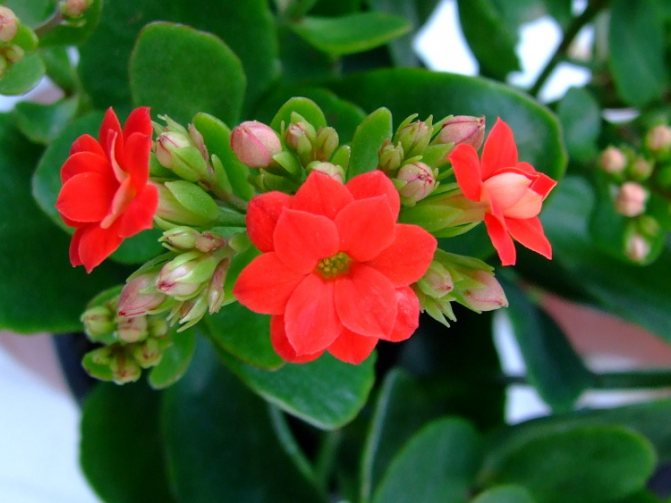

Semi-double flowers Kalanchoe Blossfeld
Features of growing succulents
Kalanchoe Blossfeld is recommended for novice growers. There are absolutely no difficulties in planting a plant, reproduction and care, however, it is still necessary to adhere to some growing rules so as not to ruin even such a picky plant.
Planting Kalanchoe Blossfeld: pot and soil mixture
For planting Kalanchoe, it is better to choose a low clay container, but wide in diameter. The root system of the plant is poorly developed and is located in the upper layer of the soil, so bulky flower pots are useless. As for the material, the plant does not like a wet substrate, and the clay promotes the rapid evaporation of water after watering. However, the succulent grows well in a plastic vessel, the main thing is that the container does not turn out to be high and narrow - in such massive leaves, with their weight, they can provoke the pot to overturn along with the flower.
The Blossfeld Kalanchoe is undemanding to the soil, but it develops better in a soil rich in humus, loose and breathable. The plant is planted in a ready-made mixture from a flower shop for cacti and succulents, but you can prepare it yourself, taking, for example, ordinary garden soil and adding a third of its volume of coarse sand to it. Succulent develops well in a soil mixture composed of equal parts of leaf and sod land, rotted compost, sand and peat. This option is also possible - three quarters of humus and one - river sand.
The succulent grows quickly, so the Blossfeld Kalanchoe transplant is desirable annually. The best time for her is the end of winter or the first decade of spring at the very beginning of active growth.
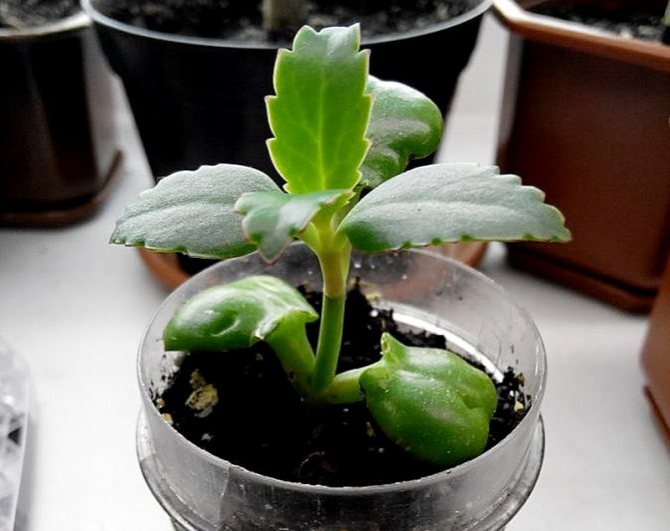

Location of Kalanchoe Blossfeld in the house, requirements for lighting and temperature
The plant is placed near a light window facing any side of the world, except for the north. Accustomed to open spaces in nature, the succulent normally develops in home premises only under good light conditions, both in summer and in winter. If you put it in the back of the room, the shoots will stretch out, grow thin and weakened, all the leaves will be turned in one direction - towards the light. Such a flower is not capable of forming buds.
However, an excess of illumination for Kalanchoe is undesirable, especially under the scorching sun rays, which cause burns on the leaf plates. The plant itself will tell its owner whether there is enough light for it - with an excess on the foliage, reddish spots become more intense.
The perennial is considered drought-resistant due to the moisture reserves in the leaf plates, therefore it withstands moderate temperature rises in summer. He needs to ensure a cool winter - from 13 to 16 degrees Celsius, in addition, the plant should be protected from drafts. The critical temperature minimum is 10 degrees above zero, with lower thermometer readings, the plant freezes and then gets sick.
Reproduction of Kalanchoe Blossfeld
Succulent plants multiply easily. The seed method is used to obtain new shades of flowers by crossing different varieties. Existing specimens are propagated by leaves and cuttings.
Leaf and stem cuttings
Each leaf of Kalanchoe, along with cuttings, is an excellent planting material. The cut part of the plant is left to dry in the air for 2-3 days. Then the cutting is immersed in the substrate and rooting is expected for 2-3 months. Watering at this time is carried out only after the soil has completely dried out, so as not to provoke rotting.
Note! Flower leaves take root much longer than cuttings.
Seeds
Sowing seeds is carried out almost immediately after receiving them. They retain their germination capacity for no more than 1 year.Sprouts appear at a temperature of + 20 ... + 22 ° С after 10 days. If they did not appear, then the seed has lost its germination. The seedlings are left to grow up to 2-3 pairs of leaves, and then they are planted in individual containers.
Top dressing, transplanting and reproduction
For a more lush and long-lasting flowering, the Kalanchoe needs feeding. Usually they are brought in together with watering. In summer, the plant is fed 1 time in 2 weeks with mineral and organic fertilizers, alternately changing them. In winter, top dressing is applied once a month.
A perennial does not need an annual transplant. Experts advise doing this as needed. As a rule, this happens once every 3 years. The transplant is always carried out in the spring. The pot is chosen 2-3 cm wider than the previous one. A drainage layer is laid out on the bottom. The soil is taken the same as for planting. When moving, the main thing is not to destroy the earthen ball and not to hurt the root system.
Reproduction of Kalanchoe is carried out by seeds and cuttings. Cuttings can be carried out both by leaves and stems. In the case of leaf breeding, take a fallen leaf and place it in a container with water or sand. Then cover with a glass jar. After the first roots appear, the leaf can be planted in the ground.


In the spring, the upper part of the stem is separated from the flower. The cuttings are thoroughly dried in a dark place for 2-3 days, and then placed in a container with sand. The stems are kept in a warm room at a temperature of + 22 ... + 25 ° C. Rooting should take place in 2 weeks. After that, the cuttings can be transplanted into a separate pot.
It should be said that seed reproduction is a very laborious process and is mainly used by breeders. In March, the grains are planted in prepared containers, slightly pressing them into the ground. Cover the seeds with a glass jar. The containers are transferred to a dark place where the air temperature should not rise above + 18 ° C. The seeds should be ventilated 2-3 times a day. The soil must be constantly moist.


In a month, you can expect the first leaves to appear. When there are 3 of them on each sprout, you can transplant into separate pots. With this type of reproduction, the first flowering can only be expected next year.
Possible problems when growing Kalanchoe
Kalanchoe perceives overflow extremely negatively, especially when the air temperature in the house decreases at the same time. This is signaled by yellowing leaves that are losing elasticity, dark spots and dried out areas appear on them.
Are there diseases and pests
With improper care, the plant suffers from fungal diseases. At the first symptoms, the bush should be treated with a fungicide and left for 2-3 weeks without watering, since the suction capacity of the roots at such a time is significantly reduced.
Additional Information. Scabbard, spider mite, aphids willingly settle on Kalanchoe bushes. Treatment with acaricide or systemic insecticide (for example, Aktara) allows you to solve the problem quickly and without threatening neighboring plants.
In winter and early spring, elegant pots with flowering Kalanchoe bushes are a popular and desired present. It is very easy to look after them. This will allow you to admire the luxurious bouquet for a very long time, and, if you wish, to repeat it.
Botanical description
Kalanchoe Blossfeld - one of the flowers of the Kalanchoe species, belongs to the fatty family. The plant grows slowly, and after the appearance of the ability to bloom, it stops altogether.
The evergreen and perennial flower has numerous, bare stems that lignify over time. In shape, the plant bush resembles a circle, the diameter of which is about 40 cm. The leaves oppositely located on the stems have a dense structure. Leaves are glossy, saturated dark green, oval, sometimes almost rectangular in shape. There is rarely a red border on the edge of each leaf. The size of the leaves ranges from 6-10 cm.
Small flowers with a diameter of 1-2 cm are tubular. Several flowers are gathered together in racemose inflorescences of a branched appearance. The flower begins to bloom in winter, flowering continues until spring, but at home flowering occurs throughout the year.
The natural color of Blossfeld's Kalanchoe inflorescences is considered to be dark red. However, to date, scientists have bred many varieties of the species with different colors: pink, white, yellow, orange.


